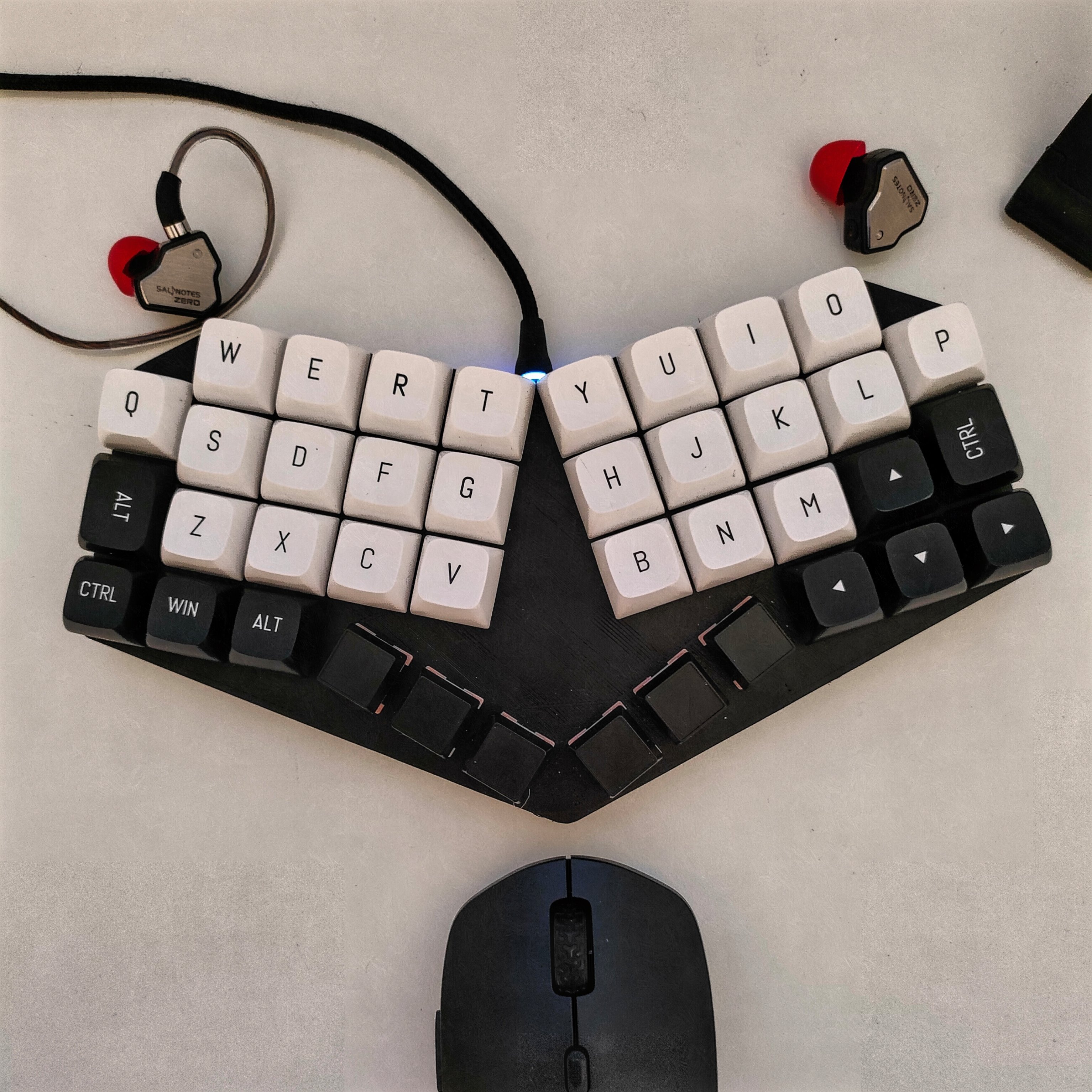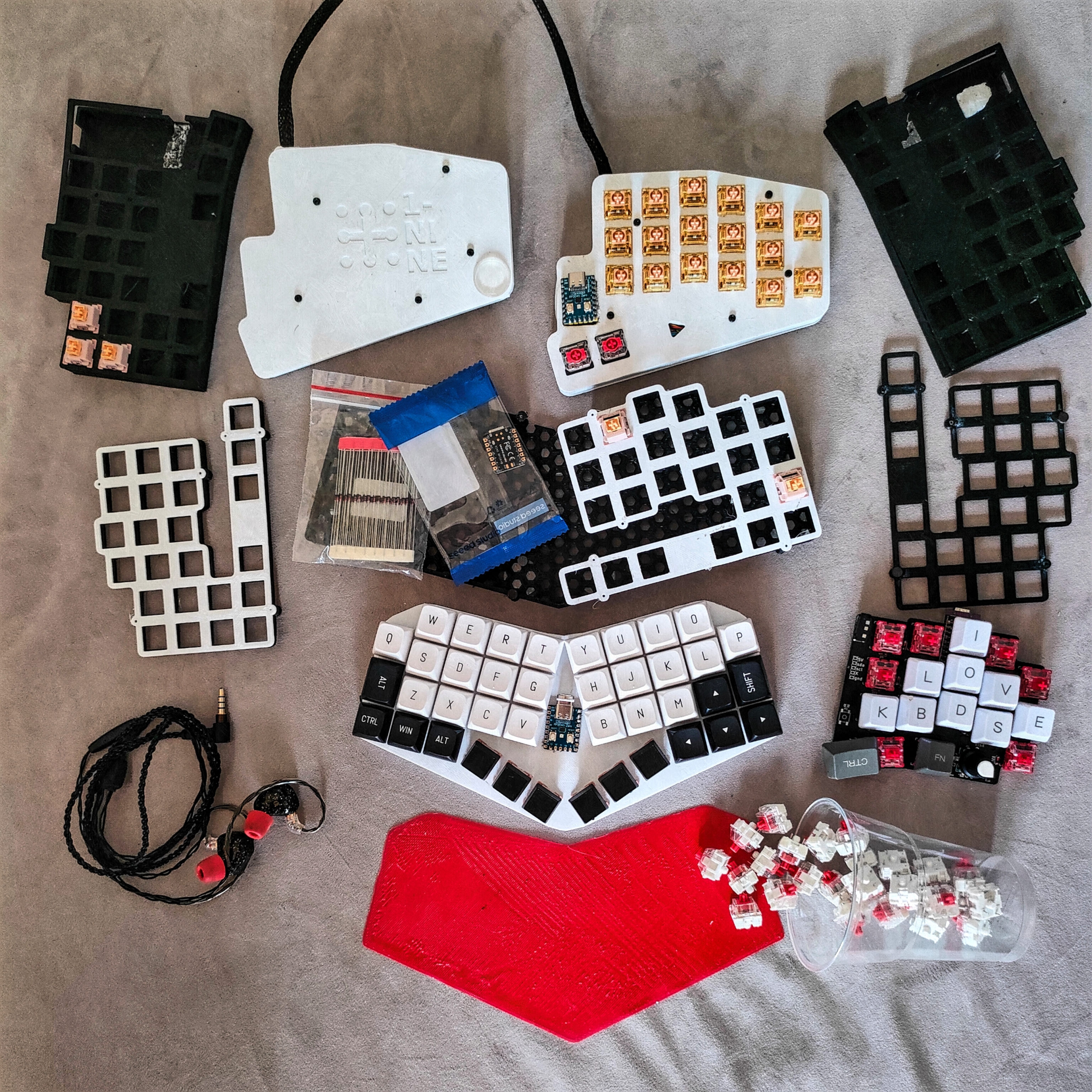Hello fellow keyboard enthusiasts!
Remember the teaser I shared about the Vesuveus mechanical keyboard? Well, I'm thrilled to announce that it's no longer just a concept - it's a reality!
Since the initial teaser, I've been hard at work perfecting the design and building the first prototype. The white enclosure served as the starting point, but I couldn't resist experimenting further. So, recently, I had a bit of spare time that I spent fixing some issues with the first white enclosure and printed this sleek black enclosure, which model you can find on the GitHub page!
But that's not all! I've also uploaded a type test video on YouTube featuring the Vesuveus in action! You can witness the smooth, silent and satisfying keystrokes as I type away. Check it out here and let me know your thoughts!
Please keep in mind that I recorded the video with my smartphone, so the quality might not be top-notch, but I'm sure you'll still get a good idea of the typing experience with the Vesuveus. Hope you will enjoy! 😄
If you're curious to see the progress, all the details, and the newly updated 3D models, head over to the GitHub page. Feel free to explore, build your own Vesuveus, and join me in this exciting DIY mechanical keyboard journey!
ATM, the Vesuveus is a handwired board. Once I learn Kicad, I plan to work on the PCB version too! If you're interested in getting started with handwiring, I highly recommend checking out Joe Scotto's guides - that guy is amazing at what he does!
I can't express enough gratitude for the incredible support and inspiration from this amazing community. Your works has fueled my passion for keyboards, and I'm thrilled to share this milestone with all of you.
Thank you for being a part of this journey, and let's keep the keyboard magic alive together!


Just to give some extra inspiration,
The multitouch gestire would be kinda unusable, but for scrolling I suggest to steal the same gestire from the japanese Toshiba laptops. They have a circular trackpad and for scrolling use the Edge of the trackpad with clockwise and counter-clockwise movement.
I know that I made It sound confusing, but if you see a video of that in action Will be Easy af to understand!